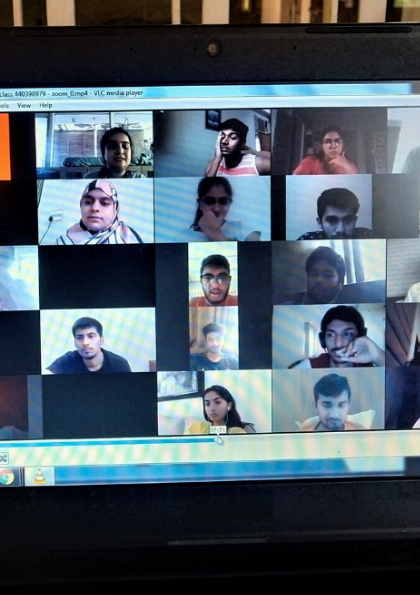
When most of us are glued to our screens for several hours of the day for work as well as social connect, several physical, mental, and psychological changes can take place.
Faculty and teachers are going through a learning curve, as they experiment with multiple ways to make the online learning experience effective and engaging for students. Yet, at university, meeting friends, interacting with faculty members, sitting on those ever-familiar benches in classrooms are all an integral part of a student’s college life. The most important element of these experiences is the “Human Connect” that is possible through social interactions and social learning and that gets missed out when all of us are “window”-ed into frames and “zoom”-ed into squares during online classes. Today, students are interacting with faculty, classmates, and friends purely through computers and phones, while they figure out complicated content on shared screens, e-white boards, and online conversations. The human element is dearly missed.
Under such circumstances, how can one attempt to keep “human connect” alive? Here are my thoughts, many of which I have practiced in Undergraduate and Graduate Programmes at Amrut Mody School of Management, from the BCom Honours to the MBA, as we moved from Round 1 to Round 4 of Lockdown 2020.
- An advisor not just a tutor: Students have several concerns while migrating to e-learning which could include the availability of material,, the differences between each other’s homes or, even, the social circumstances under which they are adjusting to the new way of taking classes. They may be having difficulties coming online, studying alone without peer support, and comprehending concepts through the online medium. Faculty therefore need to decide on a balance between content coverage and counselling even during formal sessions. Open questions on the online learning experience can invite conversations on both, positive as well as negative student experiences.
- Communicate, Communicate, Communicate: Elements such as providing detailed written feedback on submissions, releasing grades and marks on time, and providing recorded classroom sessions for future reference are paramount to increasing effectiveness and keeping the class at a uniform pace, together. Moreover, sending interesting readings to students, discussions in informal forums, and encouraging students to participate are helpful. Through such continuous communication, more quiet and reserved students may eventually speak up, bringing down the invisible online wall.
- Check-in on them: As everyone - including students - is juggling with multiple tasks while being at home and sharing a common space for home and work, there are several concerns and issues that students are dealing with. Under such circumstances, students look up to their faculty, and find value when faculty want to know how they are, over and above the lecture or the project they are working on. A simple “How are you doing, I hope you are well”, letting them know that their faculty is just a WhatsApp call away and responding when they reach out, can go a long way in the student-mentor relationship.
- Do not just ask – Tell: Everyone is human and rather than only asking about how a student is doing, occasionally sharing one’s experiences can build a stronger connect. To know that issues and concerns are faced by all – whether faculty and their family or students and their loved ones – in different measures can bring students and faculty closer to each other.
- Hold Connect Hours: Faculty can inform all students in her various courses or under her mentorship of connect hours, just like office hours on campus. These connect hours, can be purely for informal conversations and anything anyone may want to share. It is also useful to have a “Connect Meet” by sending an open invitation to students. Through these events, faculty reach out to less open students and help them. Connect Hours need not always be serious! Play some games, doodle together or just chat.
Online teaching and learning is certainly a part of the new normal and is going to be an active enabler of education in the days to come. However, no matter how far technology may go, the intangible feel of social learning and human connection will always matter.


